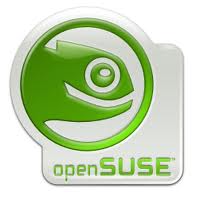The most anticipated Linux Distribution is out today. After long eight months of planning, packaging, adding features, fixing issues, testing and fixing more issues has brought the best that Free and Open Source has to offer, with Green touch: Stable and Awesome.
From OpenSUSE blog:
“While a combination of over 6000 packages supporting 5 architectures can never be perfect, we’re proud to say this really does represent the best Free Software has to offer! The latest desktops (five of them!), server and cloud technologies, software development tools and everything in between are included as well as a number of exciting, new technologies for you to play with. Enjoy!”
What’s New in OpenSUSE 13.1?
The brisk development pace of the world’s largest software engineering project has continued, with no less than four releases since the previous openSUSE version, bringing countless features to our users.
OpenSUSE 13.1 ships with the latest 3.11 kernel.
– Improved page reclaim to increase responsivity under heavy IO
– Improved tracking of resources with accounting of kernel memory in the memory resource controller and detailed tracking of which pages a program writes
– Scalability improvements with NUMA policy redesign, timer-less multitasking, rwlock, mutex and SYSV IPC message queue changes
– Introduction of Zswap, a compressed swap cache, improving performance when enabled on low-memory systems
– Btrfs introduced stability and performance improvements, Ext4 embeds small files in inodes, XFS gained support for metadata and journal checksums. F2FS is a new flash-optimized FS
– Preliminary support for NFS 4.2, the new TCP Tail loss probe algorithm to improve short transfer performance and a low latency network polling mechanism for servers.
– O_TMPFILE open(2) flag for the easy creation of secure temporary files, expanded namespaces support and the “labeled NFS” ability which brings full support for SELinux on NFS
– a new suspend power state for devices, experimental dynamic power management for all Radeon GPUs since r600 (disabled by default due to stability concerns)
Stabilized
Much effort was put in testing openSUSE 13.1, with improvements to automated openQA testing tool, a global bug fixing hackathon and more. The btrfs file system has received a serious workout and while not default, is considered stable for everyday usage. This release has been selected for Evergreen maintenance extending its life cycle to 3 years.
Networked
This release introduces the latest OpenStack Havana with almost 400 new features. Web server admins will appreciate the latest Apache, MySQL and MariaDB updates. Web developers benefit from an updated Ruby 2.0 on Rails 4 with improvements from core classes to better caching in the Rails framework and the latest php 5.4.2 comes with a build-in testing server. End users can now mount Amazon s3 buckets as local file system and use much improved Samba 4.1 with better windows domains support.
Evolved
openSUSE moves forward with AArch64, making openSUSE ready for development on the upcoming generation of 64bit ARM devices. 32bit ARM support has been heavily improved and a special Raspberry Pi build for openSUSE is available. This release also delivers GCC 4.8 with new error reporting abilities, the latest glibc supporting AArch64, C11 and Intel TSX Lock Elision, the new SDL2 and Qt 5.1, bringing QML and C++11 features to developers.
Polished
openSUSE 13.1 comes with much improved font hinting thanks to the new font engine in Freetype 2.5. YaST has been ported to Ruby, opening contribution up to a large number of skilled developers. In this release, ActiveDoc replaces doc.opensuse.org and the majority of packaged documents in openSUSE, lowering the barrier to contribution.
Faster
New is accelerated video with VDPAU support in MESA and an optimized version of glibc for 32bit systems. Linux 3.11 includes work on ‘page reclaim’, maintaining performance during disk operations.
Feature-full
Desktop users will appreciate the Android devices integration in the KDE file manager, in the shell and in music player Amarok. Artists have to try out the new Krita improvements with textured painting, greyscale masks & selections and more. GNOME Shell introduces a redesign of the system status bar and Header Bars in many applications, making better use of screen space. Enlightenment now also has an openSUSE theme.
Innovative
This release comes with a number of experimental technologies to try out. This includes preliminary Wayland support with Weston compositor in GNOME Shell and KDE Plasma Desktop as well as improved support for Ultra high-resolution in applications and shells. New is also the LightDM KDE greeter and a plasma NetworkManagement applet for testing.
Let’s get hands on this awesome distro.
Download openSUSE 13.1 here.
Source: OpenSUSE News





